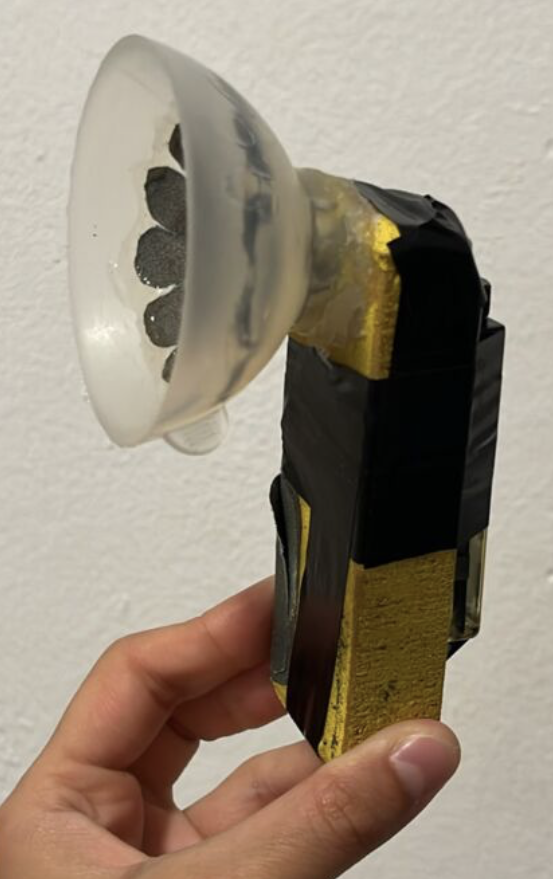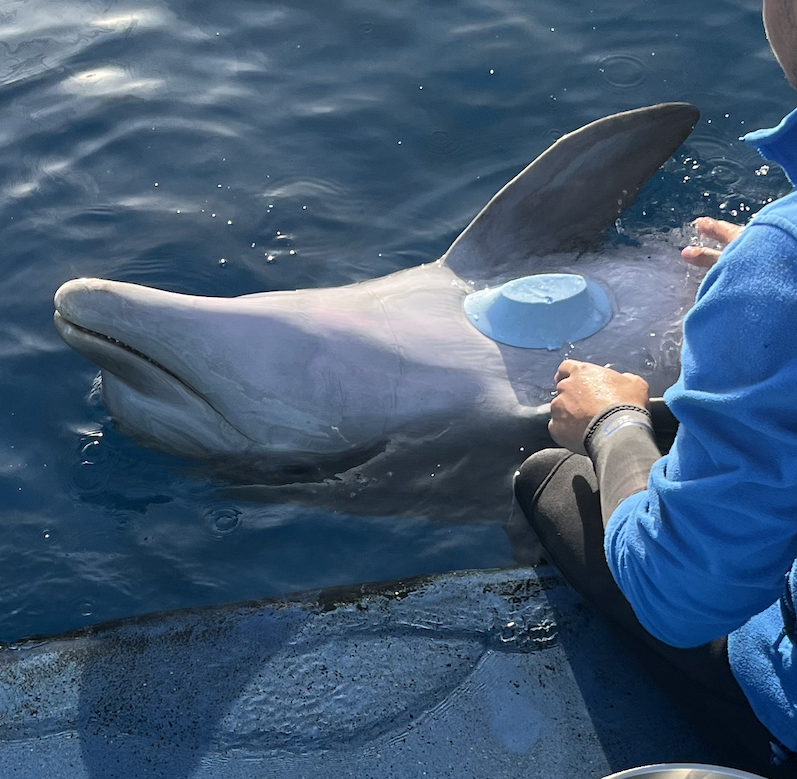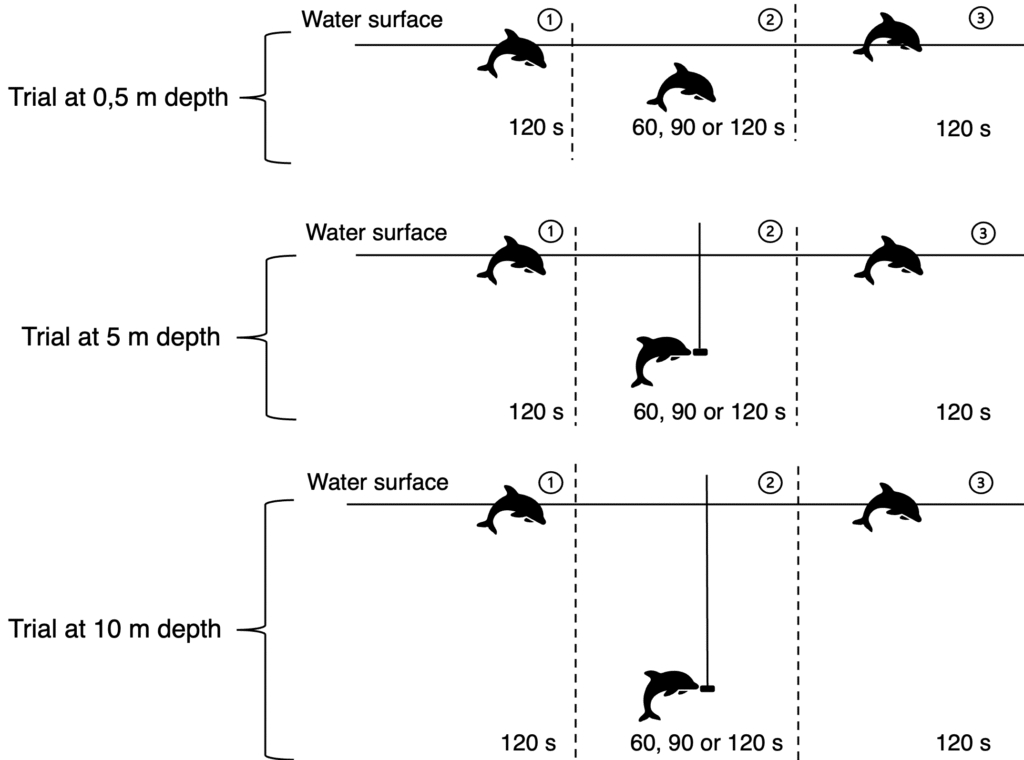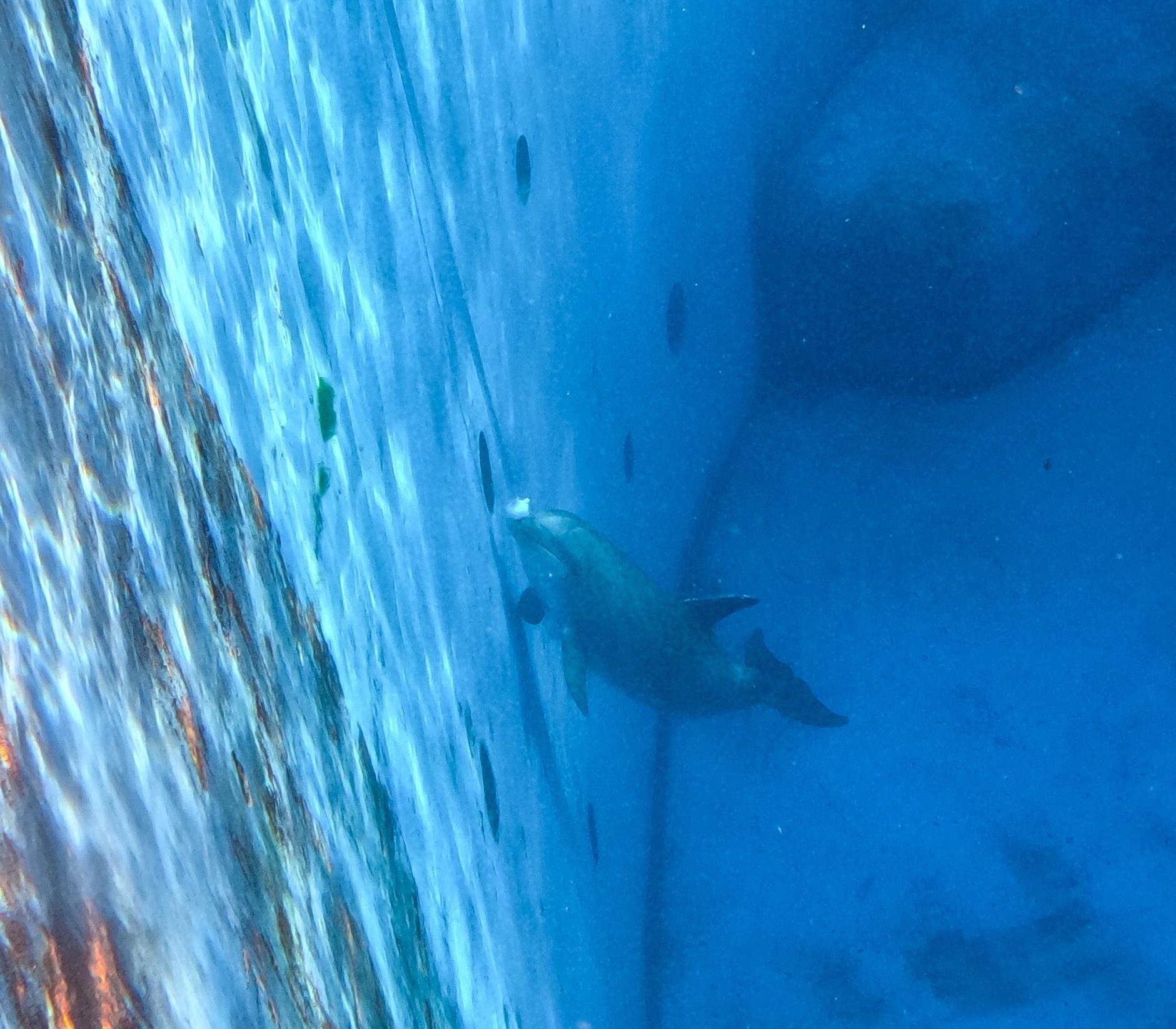The experiments were conducted between May and December 2024 at Oceanogràfic València, and seven common bottlenose dolphins (4 males and 3 females) participated in the study. The study protocol was approved by the Animal Care and Welfare Committee of the Oceanogràfic Foundation (project reference: OCE-9-24).
Trials were conducted allowing each dolphin to decide whether they wanted to participate or withdraw from a trial at any point. Prior to the trials, the dolphins were desensitized to the equipment and trained for novel research-associated behaviors using operant conditioning (positive reinforcement).
Archival physio-logger devices
Two different non-invasive physio-logger devices were used (see figures below). These devices contained sensors to record electrocardiograms (ECGs), and the EMG physio-logger also recorded body acceleration. Before the trials, one physio-logger device was attached to the sternum of the dolphin.


Experimental procedure



Data analysis
The ECG data were analysed using LabChart software, and the HRV analysis module was used to detect the R-R intervals. Detected R peaks were visually confirmed.

Average heart rate and HRV time domain indices – coefficient of variation of R-R intervals (CVRR) and root mean square of successive R-R differences (RMSSD) – were calculated before, during, and after the dives.
Overall dynamic body acceleration (ODBA) was estimated to infer the activity of the dolphins at each depth.
The timing of each breath was also recorded, which was used to determine the breathing frequency during the pre-dive periods.